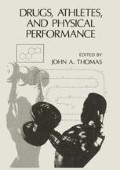Abstract
The vast majority of drugs that are used to produce relaxation of skeletal muscle achieve this effect by an action at some point in the neuronal pathways involved in muscle regulation. Although the skeletal muscles are under voluntary control, there is an abundance of neuronal circuitry which participates in the generation of smooth, coordinated movement. All of the neural information is ultimately channeled through the alpha motoneurons which are responsible for causing contraction of skeletal muscle cells. To fully appreciate the actions of muscle relaxants, it will be necessary to briefly review certain aspects of the neuroregulation of skeletal muscles.
Access this chapter
Tax calculation will be finalised at checkout
Purchases are for personal use only
Preview
Unable to display preview. Download preview PDF.
References
Bowman WC, Rand MJ: Textbook of Pharmacology, ed 2. London, Blackwell Scientific Publications, 1980.
Colquhoun D: On the principles of postsynaptic action of neuromuscular blocking agents, in Kharkevich DA (ed): New Neuromuscular Blocking Agents. Berlin. Springer-Verlag, 1986, p 59.
Bowman WC: Non-relaxant properties of neuromuscular blocking drugs. Br J Anaesth 54: 147–160, 1982.
Kharkevich DA, Shoff VA: Antimuscarinic and ganglion-blocking activity of neuromuscular blocking agents, in Kharkevich DA (ed): New Neuromuscular Blocking Agents. Berlin, Springer-Verlag, 1986, p 191.
AMA Drug Evaluations, ed 5. Chicago, American Medical Association, 1983.
Durant NN, Katz RL: Suxamethonium. Br J Anaesth 54: 195–208, 1982.
Smith SE: Neuromuscular blocking drugs in man, in Zaimis E (ed): Neuromuscular Junction. Berlin, Springer-Verlag, 1976, p 593.
Zamis E, Head S: Depolarizing neuromuscular blocking drugs, in Zaimis E (ed): Neuromuscular Junction. Berlin, Springer-Verlag, 1976, p 365.
The top 200 Rx drugs of 1986. Am Druggist, February 1987, pp 19–32.
Martin IL: The benzodiazepine receptor: functional complexity. TIPS 5: 343–347, 1984.
Guidotti A, Forchetti CM, Corda MG, et al: Isolation, characterization, and purification to homogeneity of an endogenous polypeptide with agonistic action on benzodiazepine receptors. Proc Natl Acad Sci USA 80: 3531–3535, 1983.
Tseng T-C, Wang SC: Locus of action of centrally acting muscle relaxants, diazepam and tybamate. J Pharmacol Exp Ther 178: 350–360, 1971.
Hyman SE, Arana GW: Handbook of Psychiatric Drug Therapy. Boston, Little, Brown, 1987.
Smith CM: Relaxants of skeletal muscle, in Roots WS, Hofmann FG (eds): Physiological Pharmacology. New York, Academic Press, vol 2, 1965, p 1.
Kurachi M, Aihara H: Effect of a muscle relaxant, chlorphenesin carbamate, on spinal neurons of rats. Japan J Pharmacol 36: 7–13, 1984.
Share NN, McFarlane CS: Cyclobenzaprine: a novel centrally acting skeletal muscle relaxant. Neuropharmacology 14: 675–684, 1975.
Share NN: Cyclobenzaprine: effect on segmental monosynaptic and tonic vibration reflexes in the cat. Neuropharmacology 17: 721–727, 1978.
Barnes CD, Adams WL: Effects of cyclobenzaprine on interneurones of the spinal cord. Neuropharmacology 17: 445–450, 1978.
Barnes CD, Fung SJ, Gintautas J: Brainstem noradrenergic system depression by cyclobenzaprine. Neuropharmacology 19: 221–224, 1980.
Nibbelink DW, Strickland SC: Cyclobenzaprine (Flexeril): report of a postmarketing surveillance program. Curr Therap Res 28: 894–903, 1980.
Elenbaas JK: Centrally acting oral skeletal muscle relaxants. Am J Hosp Pharm 37: 1313–1323, 1980.
Author information
Authors and Affiliations
Editor information
Editors and Affiliations
Rights and permissions
Copyright information
© 1988 Plenum Publishing Corporation
About this chapter
Cite this chapter
Hoover, D.B. (1988). Muscle Relaxants. In: Thomas, J.A. (eds) Drugs, Athletes, and Physical Performance. Springer, Boston, MA. https://doi.org/10.1007/978-1-4684-5499-4_6
Download citation
DOI: https://doi.org/10.1007/978-1-4684-5499-4_6
Publisher Name: Springer, Boston, MA
Print ISBN: 978-1-4684-5501-4
Online ISBN: 978-1-4684-5499-4
eBook Packages: Springer Book Archive

